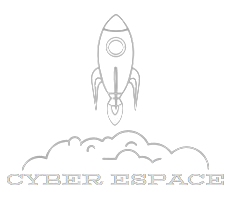
Launched on December 4, 1998, the STS-88 mission
aimed to carry into space the Unity module,
the second element of the
International Space Station . Shuttle Endeavor joined
the first element, Zarya, launched on November 20
from Kazakhstan.
Unity is the first American component of the International Space Station. It is a six-sided aluminum connection and pass-through module, or node. Unity was deployed into orbit during mission STS-88 – the first dedicated to the assembly of the Station – launched from Cape Canaveral on December 4, 1998, two weeks after the launch of the Zarya module. Unity is 4.5 meters in length and 5.5 meters in diameter. He was stowed in Endeavor’s cargo hold until his meeting with Zarya in low orbit.
Unity includes fixing points for the American laboratory module, node 3 of European construction, a first external structure or beam for the Station, an airlock and a dome with several portholes. Six in number, these fixing points make Unity an important interface in the assembly of the Station. Two tapered mooring adapters will allow the Shuttle and Zarya to attach to Unity’s hatches and docking mechanisms. By providing the connections between the Russian and European elements of the Station, Unity demonstrates the importance of ensuring compatibility between different space technologies. In addition, Unity is used to transport essential resources of the Space Station, including fluids, environmental control and life support systems,

Launched on December 4, 1998, the STS-88 mission
aimed to carry into space the Unity module,
the second element of the
International Space Station . Shuttle Endeavor joined
the first element, Zarya, launched on November 20
from Kazakhstan.
Unity is the result of the long experience of the United States in the field of human spaceflight, which dates back to the historic journey of Alan B. Sheppard aboard Freedom 7 (Mercury) on May 5, 1961. Since then, the States United undertook various Mercury, Gemini and Apollo missions, and the first manned missions to the Moon. The Skylab and the Space Shuttle have greatly expanded the scope and complexity of space exploration. In association with Canada and more than a dozen other countries, the National Aeronautics and Space Administration (NASA) is playing a leading role in the making of the ISS, the largest scientific and technological enterprise in history. .
| The electromagnetic terminal, a piece of Canadian technology, will allow the Space Station Remote Manipulator (SSRMS) to travel to various points on the Station where other similar terminals will be installed. These terminals will also be used to transfer the energy and data that astronauts need to do their jobs. |  |
-
Recent Posts
- ASSEMBLY PHASES
- Basic central structure, Mobile transporter (MT)
- CANADARM 2
- Destiny module
- Exit airlock (End of the initial phase)
- Expedition 1
- Expedition III, Logistics
- Expedition IV, Logistics
- External structure
- Home
- Logistics
- Logistics II
- Logistics III
- MPLM Leonardo
- MPLM Mobile Base (MBS)
- MPLM Raffaello and Canadarm2
- NORTHERN LIGHTS
- Solar panels
- Unity module
- Zarya Control Module
- Zvezda module
Archives
Categories
Meta
